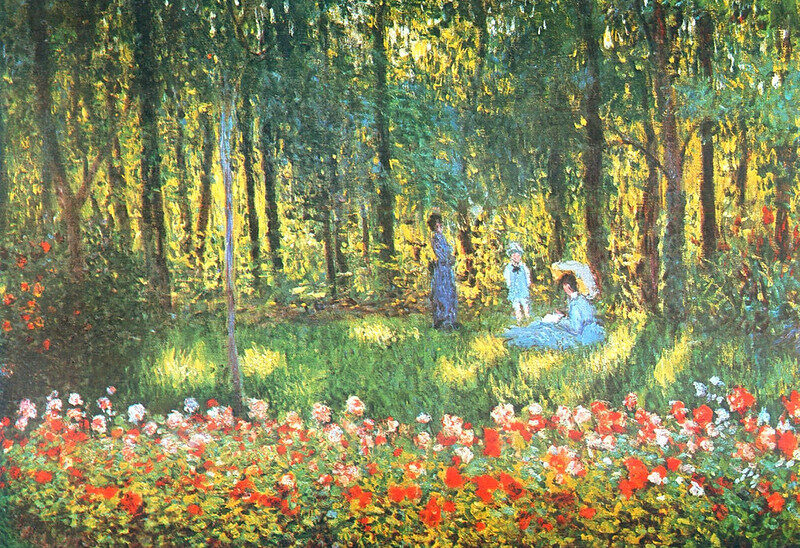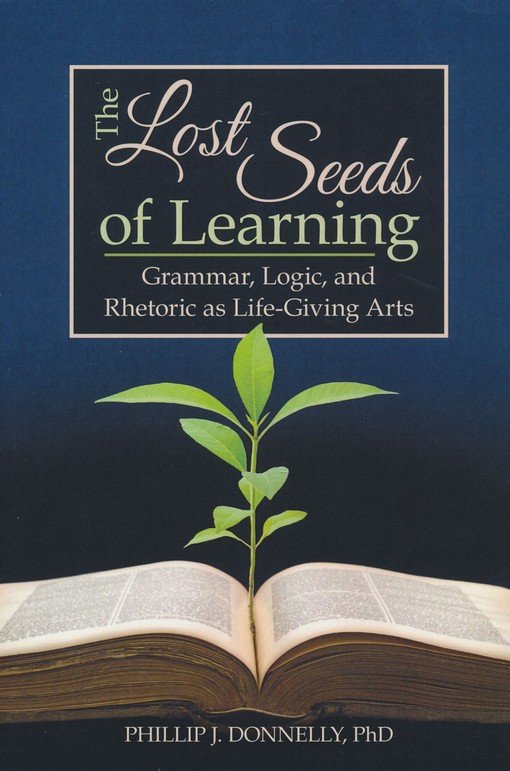Virginia Beach, VA. In 1947 the English writer Dorothy Sayers delivered a lecture at Oxford University titled “The Lost Tools of Learning.” These so-called lost tools comprise the trivium, or the “three paths” of learning: grammar, dialectic (or logic), and rhetoric. According to Sayers, these verbal arts are not subjects per se, as with the mathematical arts of the quadrivium (arithmetic, geometry, music, and astronomy), but rather “methods of dealing with subjects.” Sayers’s main complaint is that modern education teaches subjects that are siloed off from each other, leaving students both struggling to connect their knowledge about different aspects of the world and dangerously vulnerable to propaganda. A recovery of a rigorous understanding of the trivium, however, could open wide the doors for learning any variety of subjects and seeing their relationships to each other—not merely because students were taught those relationships in school, but because they were taught how to learn for themselves and could continue to do so once the formal teachers were gone.
While the trivium has been around since ancient Greece, in substance if not in name, the unique feature of Sayers’s essay is her connection between the “three paths” and her division of three stages of students’ psychological development. For example, according to Sayers, the grammar stage (called “Poll-parrot”) corresponds to pre-adolescent students, who excel in observation, memory, and recitation; the dialectic or logic stage (called “Pert”) corresponds to early-adolescent students, who enjoy analysis and argumentation; finally, the rhetoric stage (called “Poetic”) corresponds to older students, who desire to express their synthetic and persuasive abilities with more formality. Marking a dramatic shift in the way people thought of the trivium, Sayers’s essay supplied a new paradigm for how students learn—a paradigm with an initial plausibility. The most common critique of “The Lost Tools of Learning” is that ancient and medieval educators never aligned the trivium with stages of children’s psychological development. For example, whereas Sayers’s essay both implies that a certain sequence is prescriptive and fails to show how these three verbal arts inform each other, from the youngest ages students are taught about numbers and how to express themselves verbally.
In a new book, Phillip Donnelly notes these deficiencies but highlights a more fundamental danger with imagining the trivium as a set of tools. In The Lost Seeds of Learning: Grammar, Logic, and Rhetoric as Life-Giving Arts (2021), published by Classical Academic Press, Donnelly shows how the language of “tools,” while not inherently problematic, can obscure certain realities and foster a habit of mind that is detrimental to education and Christian growth. On the other hand, thinking and speaking of the verbal arts as seeds rather than as neutral tools can shape our imaginations in positive ways.
Donnelly begins by defining numerous terms. Because the book concerns the three traditional verbal arts, Donnelly first defines the word art itself as “living knowledge of how to make any given thing” (1–2). Therefore, a verbal art, as opposed to a mathematical art, refers to the knowledge of how to use words to make things. Grammar is thus a verbal art that concerns the choosing and arranging of words to make statements about reality. The art of logic is the use of words to make arguments. And the art of rhetoric uses words to make entire discourses, either in speeches or in writing. What is missing from critiques of Sayers’s conception of the trivium as a sequence, Donnelly argues, is the understanding that the trivium is a sequence, even if not connected to child psychology. Any time we explore a new area of knowledge, we must first understand the basic elements of the new discipline by means of acquiring its unique vocabulary (grammar), then make connections regarding the validity of how statements about that discipline relate to one another (logic), and finally communicate persuasively to others about the entire discipline (rhetoric).
Throughout the following chapters, Donnelly shows how each of the verbal arts is transformed in light of the Christian faith. Such transformations are necessary because, while changes throughout history typically bring mixed blessings, the modern world presents unique challenges to Christian formation, particularly the consequences of pervasive technology, such as “increased isolation and mental distraction” and “rootless and disposable living” (16). These consequences lead to uniquely modern habits, such as presuming that learning should be quick and easy, prioritizing the present, and practicing inaction. Donnelly’s goal is to explain how “a Christian understanding of the verbal arts [can] instill a contrasting set of habits,” namely those of attention, patience, and responsible action (21).
What is at stake in this imaginative shift—from thinking of words as tools to thinking of them as seeds—is that while tools do have intrinsic purposes, it is too easy to think of dead tools as being arbitrary means for human beings to achieve their own goals. Modern people tend to “assume that the material of nature is fundamentally malleable” (23), ignoring the possibility that the material world may have inherent and discoverable purposes. Furthermore, the human-made nature of tools makes it easy to think that tools serve only human purposes, ultimately leading modern folks to put their trust in the power of human calculation to control nature.
On the other hand, seeds ultimately have a divine origin (they are gifts), they are life-giving, and they point to realities beyond themselves while simultaneously drawing on a genetic relationship to what came before. Seeds are self-giving in that they bring life only by means of their own death, which means that each planting of a seed (or participation in the verbal arts) requires an acknowledgement of dependence. The usage of a tool literally requires manipulation, whereas a seed (and what it produces) is frequently and literally out of one’s hands. None of this diminishes the importance of skilled cultivation. As Sayers writes toward the end of her essay, “However firmly a tradition is rooted, if it is never watered, though it dies hard, yet in the end it dies.” Nevertheless, the shift in imagery from tools to seeds can helpfully reframe our sense of ultimate control over the fruit our words will bear.
Before addressing the verbal arts one by one, Donnelly takes a chapter to explore what C. S. Lewis’s The Abolition of Man implies about competing visions of human learning. Lewis’s Abolition has been the subject of multiple recent studies, including Dennis Danielson’s The Tao of Right and Wrong (2018) and Michael Ward’s After Humanity (2021). But Donnelly uniquely focuses on Lewis’s term “regenerate science,” which is Lewis’s way of describing a form of inquiry that, in accounting for the whole as well as the parts, would not explain away, even as it explained. Donnelly claims that by using the word regenerate, Lewis helps us to reflect on knowledge as something that is alive.
Donnelly uses Lewis’s arguments in Abolition to highlight three questions that a “regenerate science” would ask: What is the intrinsic worth of our study? What is the purpose of our inquiry? And how does our study depend on previous testimonies? These three questions correspond to three of Aristotle’s four causes, which Donnelly treats in more detail in the third chapter: the material cause, the final cause, and the efficient cause(s). These questions prompt learners to approach studies as gifts to be treated with respect, to identify purposes that are intrinsic to the material world, and to recognize that all inquiry requires participation in a tradition on which we rely. The fourth cause, the formal cause, leads us to a fourth question regarding the form or shape of our inquiry. However, because the trivium is not a rigid method that leads to predictable results, the form of any inquiry will depend on the practitioners of each discipline.
Instead of tracking through Donnelly’s highly structured arguments in the next four chapters (two on grammar, one on logic, and one on rhetoric), I will simply say that the discussions are thoroughly rewarding as he connects grammar to faith, logic to hope, and rhetoric to love. These chapters include charts that simplify Donnelly’s vision of how the Christian faith can transform these verbal arts, plus pedagogical reflections that show how these transformations could play out practically in a classroom. In each case, Donnelly explains the limits of certain perspectives and practices of the verbal arts, ultimately showing that whereas a tool is a means to an end, a seed is self-giving in its death and resurrection. Therefore, the highest expressions of the verbal arts will result in the self-giving communication of life. Donnelly’s final chapter presents an argument for Latin study, contending that because of its genealogical character (like a seed) and its role in shaping the modern world, Latin offers unique benefits for those who desire positions of intellectual leadership in an uncertain world.
While deeply philosophical, this book is also immensely practical, with specific examples of how a Christian account of the trivium could transform the teaching of other disciplines, including mathematics. And despite being philosophical, Donnelly more than once explores passages from A. A. Milne’s The House at Pooh Corner. In his appropriation of Winnie-the-Pooh to address academic and philosophical concerns, Donnelly joins a decades-long tradition of such work, including Frederick Crews’s The Pooh Perplex (1963) and Postmodern Pooh (2001), David Clines’s “New Directions in Pooh Studies” (1976), Benjamin Hoff’s The Tao of Pooh (1982) and The Te of Piglet (1992), and John Williams’s Pooh and the Philosophers (1995).
In an age in which education often prioritizes credentialing over creativity, Donnelly’s vision here is especially attractive. Anyone involved in Christian education, from primary levels to higher education, including teachers and administrators, will benefit from contemplating Donnelly’s reimagined trivium, even if that contemplation requires rigorous effort at times. John Milton concludes his seventeenth-century treatise on education by acknowledging the difficulty of his proposed plan and confessing that those capable of completing his rigorous program would require the strength of Ulysses, who stood alone in his ability to string and shoot his powerful bow. Donnelly’s scope of transformation may seem like an impossible undertaking, yet even if it is not possible for everyone to achieve the level of faith integration suggested here, anyone can still benefit by choosing particular areas for improvement, and the undertaking may prove to be less difficult than first imagined.
Besides, Donnelly’s message is in harmony with 1 Corinthians 3:6–7: Even as stewards who are called to cultivate (plant seeds, tend plants, etc.), we do not produce the ultimate harvest. We plant and water, but God gives the increase. Donnelly himself acknowledges that his book may raise questions that are not immediately answered (xv). However, this book is the first in a proposed series of four volumes, with the next three volumes addressing each of the three verbal arts separately. Thus, not only are further explanations forthcoming, but the practice of considering such raised questions develops patience and perseverance.
C. S. Lewis wrote that to read Edmund Spenser’s The Faerie Queene was to grow in mental health. A similar comment could be made of Donnelly’s book on the trivium. His heart for those involved in Christian education is evident, and to read his volume is to grow in the Christian faith. As a former student of his, I have seen his graciousness firsthand, and while I sometimes struggled to understand all of the particulars of the coursework, I always desired to understand. Lewis writes elsewhere that such a desire is itself the first fruits of the ultimate reward. Knowing that what is here is rich – and desiring to know more – are good initial steps. So if we struggle at times to grasp and retain all of the details, yet still desire to grow in understanding, then we can be encouraged in the knowledge that we are the kind of people in whom the lost seeds of learning have already begun to grow.
Image Credit: Claude Monet, “The Artist’s Family in the Garden” (1875)













